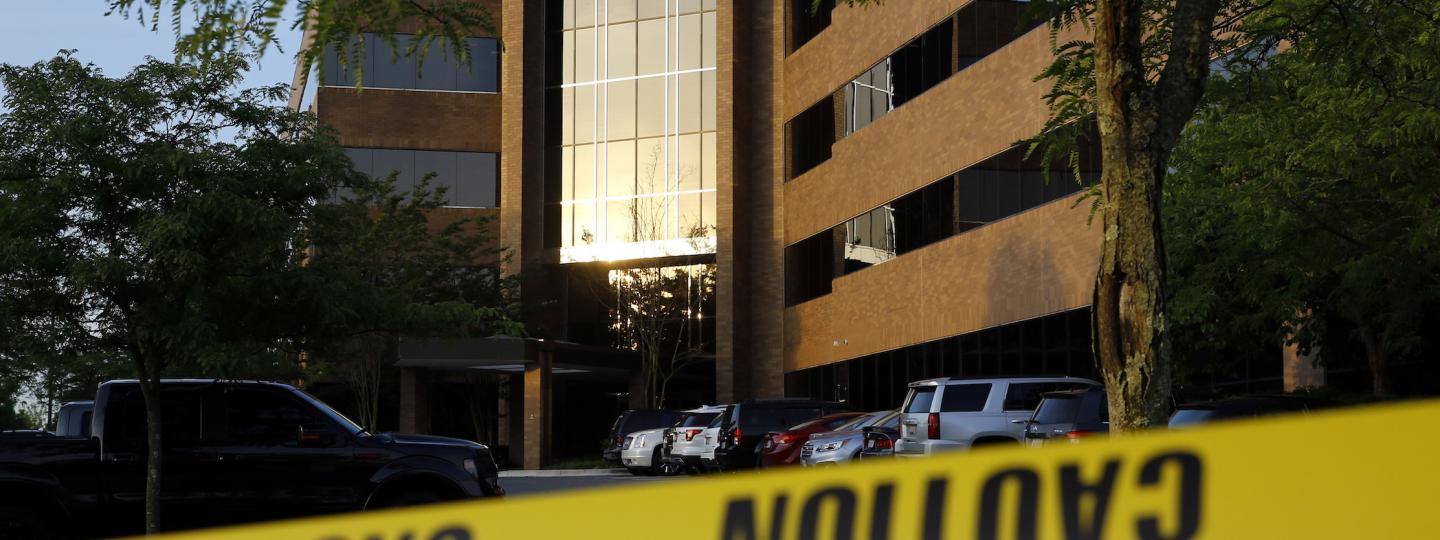If the leaders of the Capital Gazette could go back in time — before the shooting that took five newspaper employees’ lives — what would they do differently?
“We’ve thought a lot about that,” said Trif Alatzas, publisher and editor in chief of the Baltimore Sun Media Group. "We believe news organizations need to be in their communities … And what we learned is that if somebody wants to get in, they can force their way in. The key is how do you give people more time.”
On June 28, authorities allege a man who had a grudge against the Capital Gazette in Annapolis, Maryland, fired a shotgun to break a glass wall and then started shooting the newspaper’s employees. Alatzas called it “one of the darkest days in the history of American journalism.”
A panel of security experts and newspaper leaders at the ASNE conference in Austin, Texas, on Tuesday talked about the shooting and its effects on news organizations, combined with the growing anger against journalists arising from partisan politics.
Here’s what they advise:
- Talk to your employees about what worries they already have. Some journalists tend to downplay the threats because they don’t want to be seen as unwilling to do or frightened by certain stories. News leaders need to be open to, and even invite, any concerns. “Our journalists tend to be diffident and embarrassed about these conversations,” said Sally Buzbee, executive editor of the Associated Press. "Have we ever really talked with our journalists about this? Make sure they know you’re taking this seriously.”
- Envision the worst and make a plan. How can you give your employees more time to escape a shooter? Pete Blair, executive director of the Advanced Law Enforcement Rapid Response Training at Texas State University, said that when he’s interviewed people who have been through a mass shooting, “they never thought it would happen here.” You have to contemplate scenarios, write a script and then practice the escape behaviors, as you would a fire drill. That’s difficult to do when it is seen as an unlikely event, but it’s up to leaders to hold others accountable.
- The first step in any workplace security plan is to make people situationally aware. “I don’t know what a terrorist or a bad guy looks like,” said C. Danny Spriggs, vice president of global security at the Associated Press. “I do know what suspicious or unusual behavior looks like.” Situational awareness extends to evaluating threats. If a threat is persistent and includes information about journalists’ personal lives or arrives at their homes, it should be handled seriously, and probably through local law enforcement.
The panel’s moderator, Emily Ramshaw, editor of the Texas Tribune, said that she solicited questions online from journalists about the topic and heard from several that their news organization had done nothing to improve security. And that worried her.
News organizations struggle with how open they should be to the public and how security measures might make journalists’ jobs more difficult.
“If you have too much security, can you do journalism?” AP editor Buzbee said. “You have to balance that with carrying out our mission.”
Both Spriggs and Blair agreed that you can tighten security, but if it takes 45 minutes to get in and out of the workplace, employees start to circumvent the measures.
Spriggs talked about visiting one of the international Associated Press bureaus and seeing secured doors propped open.
Spriggs advised journalists who are worried about their workplaces to talk to local law enforcement officers, who can offer suggestions on security and response plans. Blair said his organization has trained local officers across the country about mass shootings.
“There is not a security expert who can tell you how to 100 percent protect yourself,” Spriggs said. “You want to increase your odds …. Complacency breeds disaster."







